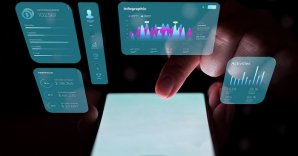The internet has fundamentally transformed how humans interact, breaking down geographical, linguistic, and cultural barriers. From instant messaging to social media, digital platforms have revolutionized personal, professional, and political communication, fostering global connectivity while introducing new challenges. This article explores the internet’s role in reshaping global communication, its societal impacts, and emerging trends.
1. Instant and Borderless Communication
The internet enables real-time interaction across continents, replacing traditional delays associated with letters or phone calls.
Key Innovations:
-
Messaging Apps: Platforms like WhatsApp, Telegram, and WeChat connect 4.3 billion users globally, allowing instant text, voice, and video exchanges.
-
Social Media: Facebook, Instagram, and TikTok let users share ideas, news, and cultures with a tap, fostering global communities.
-
Email and VoIP: Services like Gmail and Zoom have replaced snail mail and expensive long-distance calls, slashing communication costs.
Impact: Migrant workers can maintain familial ties via video calls, while businesses collaborate across time zones seamlessly.
2. Democratization of Information
The internet has decentralized access to knowledge, empowering individuals and marginalized groups to share their voices.
Transformative Effects:
-
Citizen Journalism: Platforms like Twitter (X) and YouTube enable real-time reporting during crises (e.g., Arab Spring, Ukraine War).
-
Educational Access: MOOCs (Massive Open Online Courses) like Coursera and Khan Academy democratize learning for 220 million users globally.
-
Cultural Exchange: Niche communities (e.g., K-pop fandoms, anime enthusiasts) transcend borders, creating hybrid cultural identities.
Stat: 67% of the global population now uses the internet (ITU), compared to just 7% in 2000.
3. Evolution of Language and Expression
Digital communication has birthed new linguistic norms, blending text, visuals, and symbols.
Trends in Digital Linguistics:
-
Emojis and GIFs: Over 3,600 emojis standardize emotional expression across languages.
-
Internet Slang: Phrases like “LOL,” “viral,” and “FOMO” enter mainstream lexicons.
-
Translation Tools: Google Translate and DeepL bridge language gaps, supporting 100+ languages.
Challenge: English dominates 60% of online content, risking cultural homogenization (W3Techs).
4. Redefining Professional Communication
Remote work and digital collaboration tools have reshaped workplace dynamics, accelerated by the COVID-19 pandemic.
Key Tools and Shifts:
-
Remote Work Platforms: Slack, Microsoft Teams, and Asana streamline project management for hybrid teams.
-
Freelance Economy: Platforms like Upwork and Fiverr connect 1.5 billion freelancers with global clients.
-
E-commerce Communication: Chatbots (e.g., Zendesk) and AI-driven CRM systems personalize customer interactions.
Stat: 58% of U.S. workers now work remotely at least part-time (Gallup).
5. Political Mobilization and Activism
The internet amplifies grassroots movements and political discourse, enabling global solidarity.
Case Studies:
-
#BlackLivesMatter: Social media organized protests across 60 countries, demanding racial justice.
-
Climate Activism: Greta Thunberg’s #FridaysForFuture mobilized 14 million protesters via Twitter and Instagram.
-
Digital Diplomacy: Governments use platforms like LinkedIn for soft power and crisis communication.
Impact: Online petitions (e.g., Change.org) have influenced policy changes, from environmental laws to LGBTQ+ rights.
6. Challenges and Risks
While the internet enhances communication, it also introduces significant risks.
Critical Issues:
-
Misinformation: Fake news spreads 6x faster than factual content (MIT), undermining trust in media.
-
Privacy Concerns: Data breaches and surveillance (e.g., Cambridge Analytica) compromise user security.
-
Digital Divide: 2.7 billion people lack internet access, predominantly in rural and low-income regions (UN).
Solution: Initiatives like Starlink and Google’s Loon aim to expand global connectivity.
7. The Rise of AI in Communication
Generative AI tools are revolutionizing content creation and interaction.
AI-Driven Innovations:
-
Chatbots and Virtual Assistants: ChatGPT and Siri handle customer service and personal tasks.
-
Real-Time Translation: Zoom’s AI translator breaks language barriers in multinational meetings.
-
Deepfakes: While posing ethical risks, AI-generated content is used in marketing and entertainment.
Stat: 50% of businesses plan to adopt AI communication tools by 2025 (Gartner).
8. Future Trends in Global Communication
Emerging technologies will further redefine how we connect.
Predictions:
-
Metaverse Integration: Virtual worlds like Meta Horizon will enable immersive, 3D interactions.
-
Brain-Computer Interfaces (BCIs): Projects like Neuralink aim to transmit thoughts digitally.
-
Decentralized Networks: Blockchain-based platforms (e.g., Mastodon) challenge centralized social media control.
Conclusion
The internet has democratized communication, enabling unprecedented global dialogue and collaboration. However, its power comes with responsibilities—combatting misinformation, bridging digital divides, and safeguarding privacy. As AI, metaverse, and decentralized technologies evolve, the internet will continue to shape how we connect, making communication more inclusive, immersive, and innovative.



























